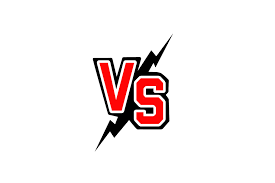
Gradle Vs Maven
Gradle and Maven are two popular build tools in the Java ecosystem. Both tools have their own set of features and capabilities, and choosing the right one for your project can be a challenge. In this article, we will take a closer look at the top features of both Gradle and Maven and compare them to help you make an informed decision.
Top Features of Gradle:
Flexibility: One of the main advantages of Gradle is its flexibility. It allows you to customize your build process using a powerful and expressive build language. You can use Groovy or Kotlin to write your build scripts, which gives you the freedom to create custom tasks and plugins.
Multi-project builds: Gradle excels at handling large, multi-project builds. It allows you to define dependencies between projects and build them in the correct order. You can also apply common configurations to multiple projects using a feature called buildSrc, which makes it easy to maintain large projects.
Dependency management: Gradle has a powerful dependency management system that allows you to specify the dependencies your project needs and the repositories where they can be found. You can also specify the version of the dependency you want to use and Gradle will handle the rest.
Plugins: Gradle has a rich plugin ecosystem that allows you to extend its capabilities. You can find plugins for tasks such as testing, code coverage, and static analysis. You can also write your own plugins to customize your build process.
Top Features of Maven:
Convention over configuration: Maven is known for its convention over configuration approach, which means that it follows a set of predefined conventions to simplify the build process. This can be a time-saver for small projects, but can also be a limitation for larger projects that require more customization.
Dependency management: Maven also has a powerful dependency management system that allows you to specify the dependencies your project needs and the repositories where they can be found. It also allows you to specify the version of the dependency you want to use and handles the rest.
Plugins: Maven has a wide range of plugins available for tasks such as testing, code coverage, and static analysis. You can also write your own plugins to extend the functionality of Maven.
Comparison:
When comparing Gradle and Maven, the main difference is in their approach to building projects. Gradle is more flexible and customizable, while Maven follows a set of predefined conventions. This means that Gradle is better suited for large, multi-project builds that require more customization, while Maven is better suited for small projects that follow the conventions.
Both Gradle and Maven have powerful dependency management systems and a wide range of plugins available, so they are both suitable for most Java projects. Ultimately, the choice between Gradle and Maven will depend on your project’s requirements and your personal preference.